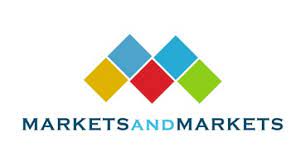Africa’s coatings market remains optimistic about its performance on the back of growing automotive, construction and building sectors. Market leaders such as Henkel, Hempel, BASF, Becker Industrial Coatings and Sika have recently indicated in their financial reports that the African market is one that contributed to an increase in their sales volumes. Some of the companies have actually opted to open operational offices in Africa to tap into the region’s potential.
Germany’s Henkel, whose third quarter 2012 sales went up by 6.6% to €4.294 million (an increase of 2.5%), listed Africa as one of the markets that contributed to the company’s improvements in sales. Henkel, which is known for its Loctite, Pattex and Teroson brands, has operations in Tunisia, Kenya, South Africa, Egypt and Algeria. The company’s brands of adhesives, sealants and surface treatments are supplied to the transport, electronics, maintenance and repair, and packaging sectors.
The market put a smile on the face of another German firm, Bayer. Although the company reported flat sales in Europe and a decline in volumes in Asia/Pacific, the African market enabled it to achieve what it calls a “gratifying increase in volumes” for the third quarter of 2012. Bayer, who produces raw materials for polyurethane coatings and adhesives, says its sales for the quarter went up by 2.8% to €512 million.
Becker Industrial Coatings’ CEO, Dr. Boris Gorella, said in the European Coatings Journal, Africa is its top-selling market following what he said was the company’s 2011 “realignment of the EMEA market.”
In Eastern Africa, Crown Paints Kenya, which dominates 65% of the region’s market, pushed its sales volume from 12.4 million litres in 2011 to 14 million litres last year. The company is known for its brands of decorative, automotive, industrial, and intermediate and road-marking paints. It also dominates production of thinners and adhesives.
An Encouraging Business Environment
Although players in the African coatings market faced challenges like increasing raw material prices, depreciating local currencies and global fluctuation of fuel prices (which impacted their production costs), the business environment was encouraging in 2011 and 2012, making it possible for companies to expand and engage in partnerships as they consolidated their share of the market.
Hempel, the world’s second largest manufacturer and supplier of protective, marine, decorative, container and yacht paints, entered into a partnership with Crown Paints Kenya to enhance their supply and technology in the paint industry, according to a statement by the Kenyan firm. Hempel and Crown Paints will share supply networks and technology in an effort to increase their share of the paint market, Crown’s CEO, Rakesh Rao, said.
In Ethiopia, a 7% GDP growth in 2011 through 2012 spurred expansion of the country’s construction sector, particularly the building of huge offices and real estate projects, especially in urban areas. “This has created an increased demand for interior and exterior finishing products such as paints,” said the Ministry of Economic Affairs mid last year.
The country’s coatings sector had a major boost last year with the construction of the first factory for the production of eco-friendly paints and other finishing products near the capital Addis Ababa under a joint venture of Egypt’s Terraco Egypt Chemical Industries and Ethiopia’s VIVID Private Limited Company. A joint statement by the companies said the factory “Will combine the most stringent environmental guidelines for interior and exterior paints in the world.”
The African market also experienced the introduction of new and better solutions, such as Mapeflex Blackfill by Mapei Group’s subsidiary, Mapei South Africa; Tal Pourable Adhesive by Tal South Africa; and Master Mix and Nexa Autocolour by a partnership of South Africa’s Free-world Automotive Coatings and Kenya’s Crown Paints.
Mapei says Mapeflex Blackfill, a one-component, flexible bituminous sealant, has a soft consistency and is ideal for quick sealing and repair applications to most surfaces, such as torching on membranes.According to Mapei South Africa’s Product Manager for Building Systems, Paul Nieuwoudt, “Due to its soft consistency, Mapeflex Blackfill forms a plastic mass that is easily extruded and shaped. The product bonds to most substrates, such as cementitious material, wood, brick, metal and a number of plastics.”
To cater to the increasing demand for a suitable adhesive for large-format tiles for both interior and exterior floors, TAL launched TAL Pourable Adhesive. TAL’s inland sales manager, Marius Botha, says, “We are constantly developing new products to cater to the demands of the tile industry, and identified the need for a rapid-setting pourable and flexible adhesive to save contractors time on-site.” The company explains that TAL Pourable Adhesive “is a high-strength, grey cement-based adhesive suitable for all tile formats, but is especially ideal for fixing all large-format ceramic, porcelain, granite, natural stone and dark-coloured marble tiles to high-traffic floors.”
Vehicle owners in South and East Africa also had reason to smile over the past year.
South Africa’s Free-world Automotive Coatings through its Plascon paints and Kenya’s Crown Paints last year partnered to launch new commercial automotive paints, Master Mix and the 2K Acryline product, Nexa Autocolour. The South African company says Plascon now holds close to 45 percent of the country’s market share with its dominant Master Mix, a metallic finish range of paints.
Drivers
The coatings market in Africa is being driven by three major sectors – automotive, construction, and a booming oil and gas industry.
In South Africa the performance of the automobile industry has improved over the past two years, increasing demand for coatings. Currently the country produces an average of 600,000 vehicle units annually, up from 470,000 units in 2010, a 12.8% growth. The National Association of Automobile Manufacturers of South Africa (NAAMSA) says the country will produce an average of 1.2 million commercial and passenger vehicles by 2020 under the Automobile Production and Development Programme.
According to NAAMSA Director Nico Vermeulen, “The anticipated relatively high economic growth projections for Africa should support further growth in South Africa vehicle exports to African countries, while the recession in Europe is likely to impact negatively on export sales into that region. The anticipated higher levels of production should provide support to the industry, particularly component manufacturers.”
Growth in the building and construction sector in Africa continues to underpin the development and supply of coatings. Countries across the region have shown interest in expanding the sector by increasing investment and opening up the segment to private investors, hence catalyzing its growth. UK Trade and Investment (UKTI), which helps UK-based businesses access and expand international markets and also promote the UK as a best investment destination, has, for example, said, “With the booming real estate industry and high demand for infrastructure development, Ghana provides a wide range of possibilities for companies entering the market.” Ghana has increasing potential for investment in real estate, which, until recently, remained largely unexplored. In recent years the industry has seen a surge of foreign companies investing in hotels, office buildings, commercial space and warehouses.”
The emergence of the oil and gas industry in East Africa and the growth of the sector in other parts of Africa have also increased demand for pipeline coatings. Kenya has kicked-off the process of constructing a new $300 million pipeline linking the Indian Ocean port city of Mombasa to the capital Nairobi, 450 kilometers away. The line is likely to be extended to Uganda to cater to an anticipated production of the recently discovered oil. In Tanzania the government is constructing a 532-kilometer gas conveying pipeline between the gas-rich Mnazi Bay and the port city of Dar es Salaam.
Investing in Africa
Coatings manufacturers and distributors in Africa are looking beyond countries where they are based for new business opportunities. Among major market leaders to establish operations in the region is Hempel, which opened an office in South Africa to take advantage of what it calls “the growing African market for protective coatings.” The company is targeting supply of coatings for the mining, petrochemical and metal processing industries as well as for wind turbines, containers and infrastructure. It will also supply countries throughout Africa.
Elsewhere, Switzerland-based Sika Group, known for its coatings within the marine, container, yacht, decorative and protective market segments, said it made capital investments in areas with huge business potential such as East Africa. It has established a subsidiary in Kenya.
Despite the otherwise promising performance of the coatings industry in Africa, Sika was one of the investment victims of the recent political upheavals in North Africa that led to the toppling of Egypt’s Hosni Mubarak and Libya’s Muammar Gaddafi and disrupted key consumer segments such as building and construction. “On account of political unrest in North Africa and parts of the Arab world, Sika reported substantial setbacks in sales in these countries.” Business in Libya came to a complete halt, in Egypt the construction sector shrank by 60%, and the revolt in Syria paralyzed the economy, which negatively impacted the entire region,” the company said in release.
The future of Africa’s coatings market looks bright. It is an investment destination that paint makers have pushed higher on their priority investment list.








Report Abusive Comment